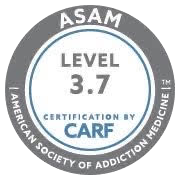Does Kratom Addiction Exist? Truths and Myths
What is kratom and what is it used for? Read on to learn more about the types of kratom and its effects.
Call Us Today
What Is Kratom?
In the United States, about 0.8% of people twelve and older reported kratom use in 2020. 1
According to the U.S. Food and Drug Administration (FDA), kratom is a type of plant that many people use for its stimulant and opioid-like effects. Kratom is an herbal substance that’s currently accessible and legal in many places throughout the world. Specifically, kratom is a tree found in Southeast Asia, specifically in Indonesia, Malaysia, Thailand, and Papua New Guinea. 2
Mitragyna Speciosa
Mitragyna speciosa is the scientific name for the tree that kratom derives from. This tropical tree is from the same family as Rubiaceae, also known as the coffee tree.3
Alkaloids Compounds
Kratom is made up of multiple chemical compounds, also known as bioactive alkaloids. Mitragynine, found in kratom leaves, is one of the top two kratom-related alkaloid compounds. 7-hydroxy mitragynine, or 7-HMG, is the other well-known chemical compound in kratom leaves.
Street Names
Kratom is also known under the street names Biak, Ketum, Thang, and Kakuam.
What Is Kratom Used For?
According to the American Kratom Association, some people use kratom to improve their health and overall well-being. However, kratom products also have the potential to cause severe harm and adverse side effects for some users.4
Traditional Use
What is kratom used for traditionally? People sometimes use liquid kratom for fatigue, mental health problems, withdrawals, relaxation, pain relief, as a stimulant, or for its opioid-like effects.
What Forms of Kratom Are Available For Consumption?
Various kratom strains are available in a wide range of forms. Some of the most popular types of kratom include kratom powder, liquid kratom, kratom capsules, and kratom pills. These all affect the body in various ways. The forms of Kratom are as follows:
- Capsules: Some people consume kratom using capsules containing raw plant matter. These can take an hour or so to take effect.
- Powder: To experience kratom effects, some users prefer a powder form that can be mixed into food and drink.
- Leaves: Depending on a person’s desired kratom dosage, they may brew the leaves into a tea. This can make the kratom quite potent depending on how long it has steeped.
- Liquid: Liquid kratom extract is a common form available for consumption.
How Long Does Kratom Stay In Your System?
The pharmacology of kratom, along with how long a person has been using the substance, determines how long it will stay in a person’s system. Depending on the dose size taken, kratom can stay in the system for different periods of time. Most commonly, the half-life of kratom is approximately one day.
Treatment for Addiction
If you or someone you care about is struggling with kratom or other substances, healing and recovery are possible with professional substance use treatment. In many cases, it can be helpful for individuals to access medication-assisted treatment (MAT) and mental health treatment. San Diego Detox provides inclusive, trauma-informed, and person-centered therapy for individuals struggling to break the cycle.
Inpatient
Inpatient rehabilitation is an excellent resource for people with substance use disorders. A structured program helps remove a person from their environment and potential risks while also teaching them to manage cravings successfully.
Outpatient
Depending on a person’s clinical evaluation, they may begin with inpatient treatment before progressing to outpatient services or start with outpatient care. At San Diego Detox, trained clinicians work alongside each individual to create client-driven treatment plans for long-term healing.
Therapy
Evidence-based therapies offered at San Diego Detox include cognitive behavioral therapy (CBT), dialectical behavioral therapy (DBT), and acceptance and commitment therapy (ACT). Additional therapies are mindfulness, guided meditation, yoga, spiritual development, and PTSD treatment.
Reach Out to San Diego Detox and Begin Healing
If you or a loved one could benefit from support during your sobriety journey, we are here for you. Contact us today and begin healing; we will provide the necessary tools and support for long-term wellness and fulfillness.
Different Types of Kratom Strains
What are the different strains of kratom? Here are some of the most common strains: 5
- White Vein Kratom: Some people report that white vein kratom has a more substantial effect than other strains.
- Red Vein Kratom: Most kratom users consume leaves with either a red or white vein.
- Green Vein Kratom: Green vein kratom is known to be the midpoint between white and red vein kratom.
- Yellow Vein Kratom: It is reported that yellow kratom is a blend of green and red vein kratom.
Kratom vs. CBD
Kratom and CBD are becoming increasingly popular in the United States and worldwide, but each substance has different effects. While both are said to elicit calming effects in the body, kratom acts more like an opioid whereas CBD is similar to marijuana. CBD, short for cannabidiol, is a chemical compound in the cannabis plant. CBD is not approved by the FDA for recreational use. 6
Currently, kratom is also not controlled or monitored under the Controlled Substances Act in the United States. According to the DEA, various states have different prohibitions and regulations regarding kratom possession and use. 7
Is Kratom Addictive?
More research is needed on kratom addiction, withdrawals, and substance use disorder symptoms before scientists can determine if it is addictive or not. However, many people have become physically or psychologically dependent on its effects before.
Although there may not be an official determination about kratom addiction, experts believe that kratom does at least have the potential for addiction because its main chemical compounds activate the same receptors as other addictive drugs. Research suggests that people can experience mild to moderate withdrawal symptoms if they discontinue use, especially if they stop all at once. It’s recommended to slowly stop taking substances instead of quitting them immediately.
Effects of Kratom
Kratom can affect the body both in the short- and long-term. Here are some of the common effects:
- Short-Term: In the short-term, kratom use can cause nausea, dizziness, constipation, and drowsiness.
- Long-Term: Long-term effects of kratom use, although rare, can include mental, neurological, heart, lung, gastrointestinal, and liver problems.
Does Kratom Show Up In Drug Tests?
Kratom can show up on drug tests, although many tests don’t screen for it unless they’re specifically searching for it, due to the fact that it’s not a very common substance and has a low potential for addiction. However, kratom or mitragynine can most commonly be screened for using urine samples. Individuals can also be tested for mitragynine using a blood test, which will be able to pick up on any substances for a longer period of time than urine usually. 8
Liquid chromatography is typically used to test the quality and contents of substances, including Mitragyna speciosa.
Resources
https://nida.nih.gov/research-topics/kratom#kratom
https://www.fda.gov/news-events/public-health-focus/fda-and-kratom
https://www.deadiversion.usdoj.gov/drug_chem_info/kratom.pdf
https://www.americankratom.org/about
https://naturetrust.org/wp-content/uploads/2018/06/A-Study-of-Kratom-Eaters-in-Thailand.pdf
https://www.fda.gov/consumers/consumer-updates/what-you-need-know-and-what-were-working-find-out-about-products-containing-cannabis-or-cannabis
https://www.dea.gov/sites/default/files/2020-06/Kratom-2020_0.pdf
https://www.ncbi.nlm.nih.gov/pmc/articles/PMC4425236/
https://pubmed.ncbi.nlm.nih.gov/30997725/



